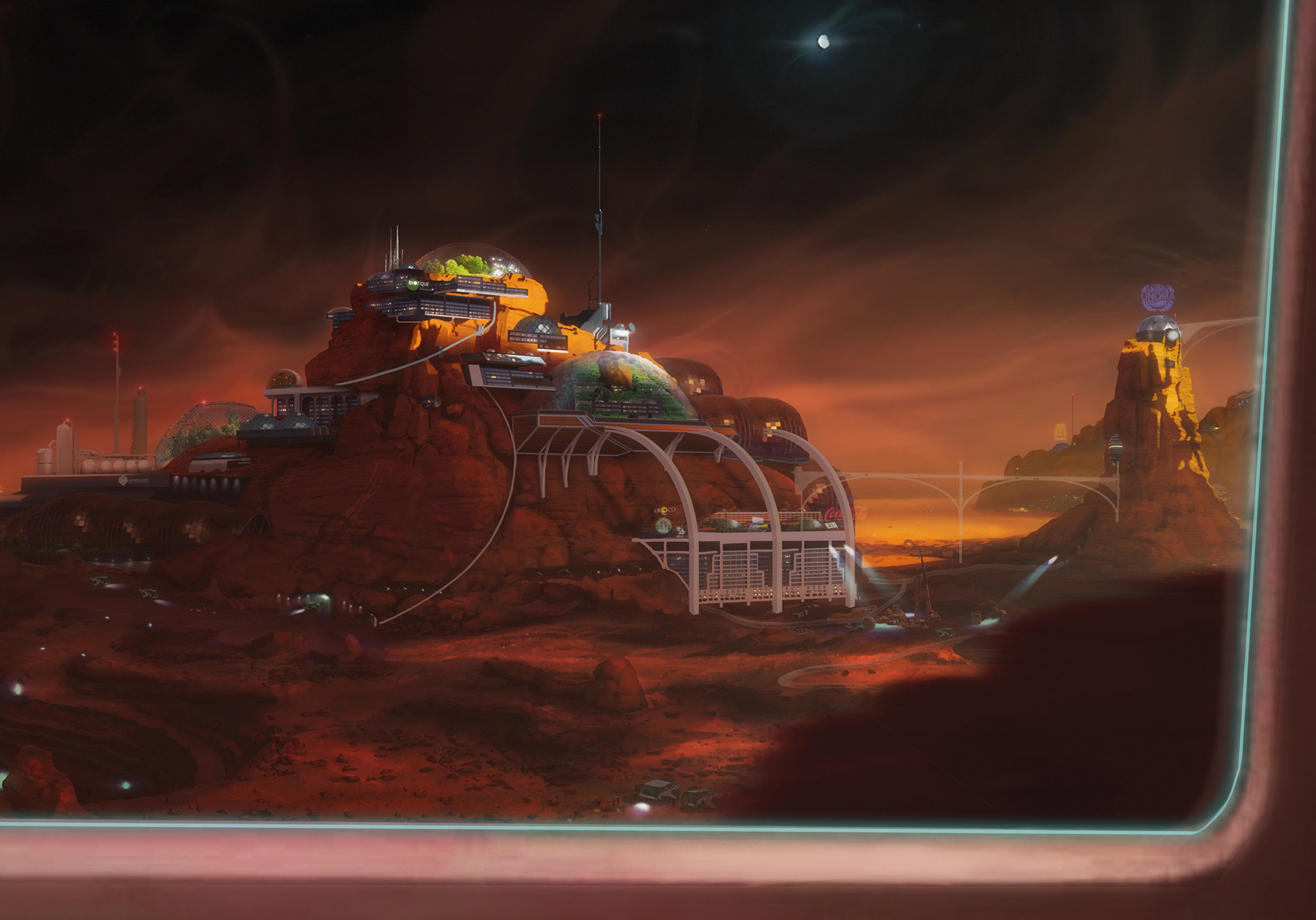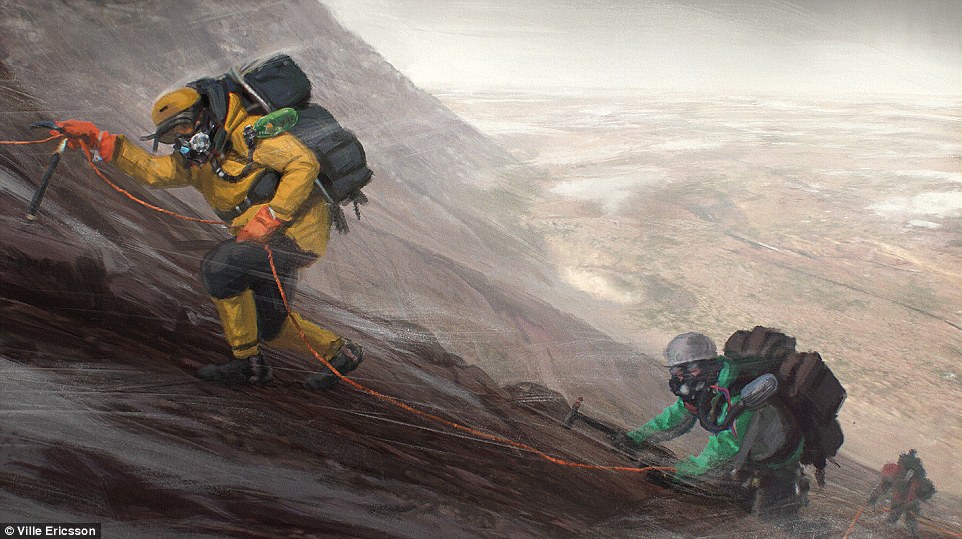Art corner: Mars trilogy
Submitted by KimonIn the previous article we saw all kinds of things inspired by the Red/Green/Blue Mars trilogy. In this post we will focus on just illustrations. We have covered in the past artwork by Ludovic Celle (twice) and Carlos NCT. Here are some other artists.
There are of course literally dozens of illustrators that have depicted the colonization of Mars, here I will display the ones that have explicitly mentioned KSR's Mars trilogy as an inspiration -- and it doesn't just stop at landscapes!
Frans Blok
Dutch designer Frans Blok, a big fan of the Mars trilogy for many years, has created a wiremesh 3D model of the First Hundred's ship, the Ares:




Frans even used it to create a mock trailer for a blockbuster movie adaptation of Red Mars! (updated version - older version here)
Travis Smith
Vancouver artist Travis Smith illustrated some scenes from Red Mars and did what few others have attempted: put a face on specific beloved characters! Are they how you imagined them? Here is an interview with him at Gizmodo. Here they are, with Travis' descriptions:
Maya on the Ares - From the chapter, ‘The Voyage Out’, an emotional moment in the Ares’ bubble dome. Here for Maya is reflecting on her goal and everything that she has done to achieve it.

Nadia in Underhill - The early days of construction in ‘The Crucible’. Here Nadia is listening to Louis Armstrong amidst the chaos of construction. Her character is reserved, so I imagined this movement as almost subconscious, her character is experiencing one of the happiest moments of her life.

Boone arriving in Burroughs - From ‘Falling into History’, John Boone visits Burroughs in order to meet UN bureaucrat Helmut Bronski. He is wearing a garment mentioned in the books (not specifically worn by Boone, but implied), a jacket made from a reflective copper-foil looking material that affords some radiation protection.

Closer view of Burroughs. The advertisements are a mixture of transnational and consumer companies. My assumption being that Burroughs is the one place on the planet a person might find a Tim Hortons or Starbucks coffee as it is one of the few settlement approaching the size of a city. The larger portions of the city would be revealed in the next 'shot' as the camera perspective would show something approximating Boone's view of the Valley Mesas beyond.

Chalmers on the Escarpment - Chalmers broods following the murder of his friend and rival Boone in the chapter ‘Guns Under the Table’. He has joined Zyek’s mining co-op, caught in a storm, he is on his own out on the Great Escarpment.

Ville Ericsson
Stockholm artist Ville Ericsson gives us John Boone driving and a vision of a terraformed Mars. Here is an interview with him at MailOnline.


You can get a Mars trilogy feel from some of his other Mars art: domed cities, climbers up Olympus Mons, and more.





William Bennett
Last but not least -- Wellington NZ artist William Bennett, who did plenty of Red Mars designs a few years ago. And I do mean plenty! This might make this page heavier, but I wanted to display all 33 images here! There's a great level of detail -- you can display each image individually to read some comments. In some cases he has taken inspiration from the books and added some of his own ideas and concepts (such as logos of real-world companies).
The First Hundred training base in Antarctica:

Assembly of the Ares in Earth orbit:

First colonizers' habitats:


Colonists' suits:




Lectern:

Guns (because why not):

Martian rovers:




Transponder:


Trucks and other vehicles:


Space elevator and Clarke base:




Air miner:


Mohole:


Acheron Labs:


Echus Overlook:

Burroughs:



Martian consumer products (Philip K Dick would like this):

That's all for now! Suffice to say there's plenty of interest for a visual interpretation of these novels. One can imagine the above being artwork commissioned to be the basis for a feature film or television series adaptation of the novels... Personally, I like the design aspect but I wonder whether an adaptation can make the themes of the novels justice.
We will now switch Earthside to cover the imminent release of KSR's new novel, The Ministry for the Future!












